Puppy: 8 Quick Tips to Help Your Puppy Adjust to a New Home
So, you have chosen your new puppy, bought the essential supplies, puppy-proofed your home, and everyone in the household is up to speed with the rules. Finally, you can bring your new pooch home — Yaaaay 😍!
For everyone’s best experience, you need some quick tips to help your puppy adjust.
Now, it’s normal to be excited, and you are eager to start bonding with your new dog but remember, your puppy is away from his mom and litter mates, and has been taken out of his familiar environment.
This can be a very scary and confusing time for him, so you need to help him through this adjustment period in the best possible way.
Read on for the quick tips that will benefit your puppy while he is getting used to his new home.
Table of Contents
Bring your puppy home
After weighing up the options of ‘shelter dog vs puppy‘, you have decided on getting a puppy — yaaay, you are getting yourself ready for a whirlwind of all kinds of things 😅.
Now, when you finally walk through the door with your pup, it is understandable you just want to let him run around, explore, and meet his new family all at once. However, it is best to take things slowly by following these steps.
Here are my 8 quick tips to help your new puppy adjust to a home.
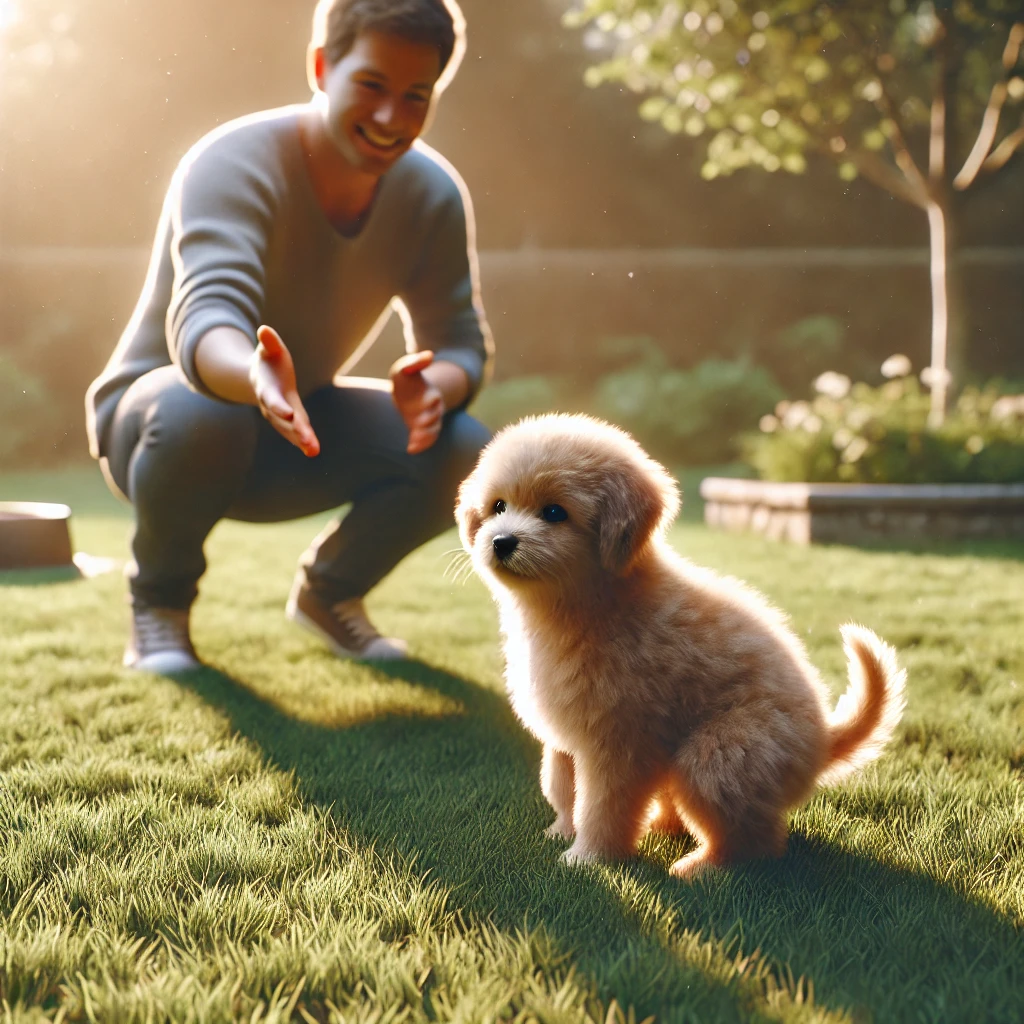
1. Potty Spot
Choose a designated spot outside where you want your pup to do his business. If he relieves himself, that is the perfect time to immediately add a command, like ‘go potty’ or similar. Also, don’t forget to praise him!
If your pup has an accident, which will undoubtedly happen, NEVER, and I cannot stress that enough, NEVER punish him!
He is learning, and punishing him could lead to him being afraid of you and of relieving himself.
If that happens, he will stop relieving himself, and well, you can guess it, that would be trip to the vet. Not to mention, it will cause a lot of pain for your sweet pupper!
If you catch him in the act, say ‘no’ and lead him to his potty spot. ONLY do so when you catch him in the act — your dog does not understand it when you reprimand him (way) after the fact.
He cannot link the ‘no’ to when he peed in the house an hour earlier.

2. House Introduction
Contrary to popular belief, it is best not to let your pup roam around the house to his liking. This will cause sensory overload by being exposed to too many new places/rooms, smells, and people — trust me, as someone who is autistic, I know what that feels like! You don’t want to overwhelm and confuse your puppy.
Start by showing him the living space, where his food and water are, and where his sleeping spot will be — I suggest keeping him on a leash while exploring so you can guide him where necessary. Don’t move to a new room/space too fast; let your pup adjust.
Do not show your puppy any rooms that you want to keep off-limits. It is also crucial to keep doors and windows closed if you let your pup explore off-leash — you don’t want him bolting out the door if he sees a bird or a rabbit!
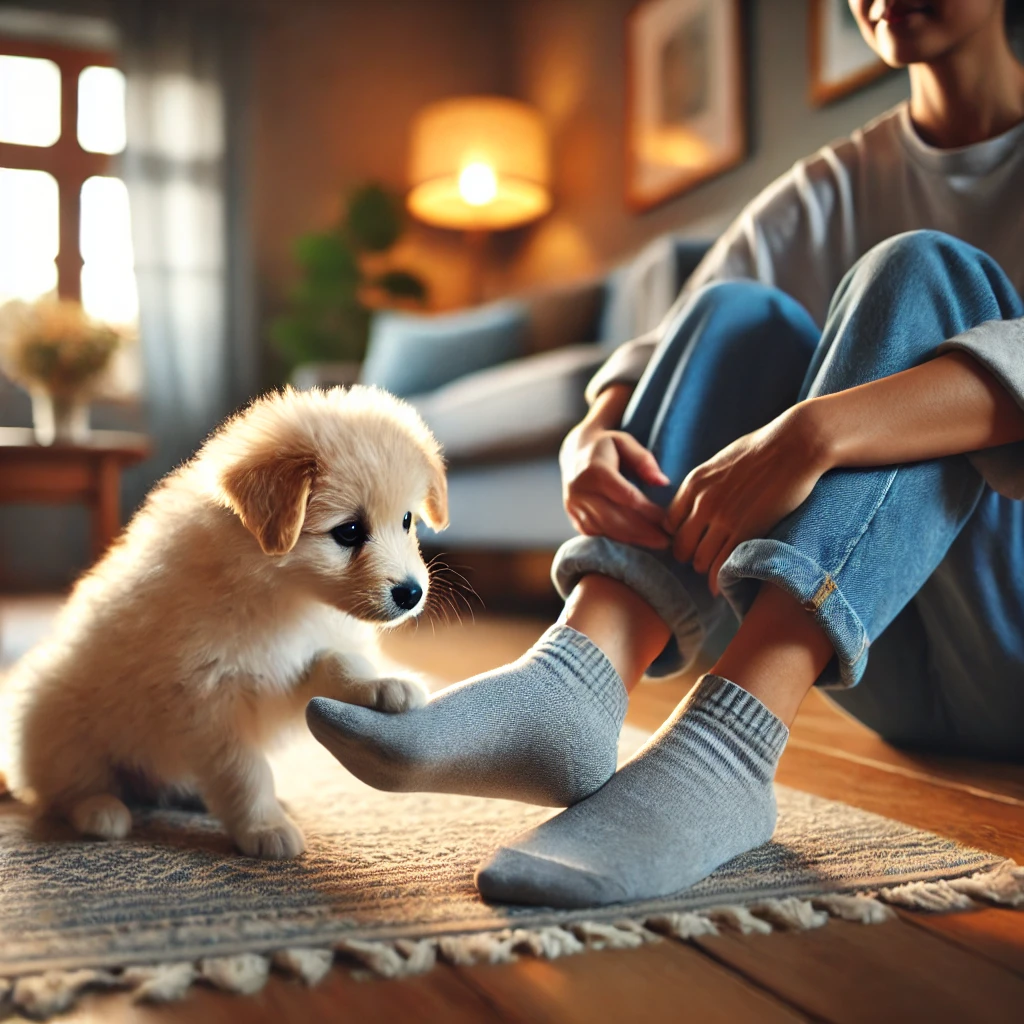
3. Family Introductions
It is best, if possible, to introduce your pup to 1 new person at a time and make sure this person is calm. I know this might be difficult for children, but you mustn’t overwhelm the pup.
Let the new family member sit down and not chase after the puppy, especially not when he is walking around exploring the room.
Be mindful that it is best not to have kids (especially really young ones) sit on the floor while meeting the pup. He might be too enthusiastic and can unintentionally hurt your child by jumping/being rambunctious.
4. Sleeping Spot
Your dog needs a sleeping spot, preferably within your line of sight. My suggestion is to use a crate. I know, I know, crates have a bad rep, which is undeserved! If you introduce and use the crate properly, it will be your dog’s safe haven.
Some advice: if your crate is too big in the beginning, just use a divider to make the space smaller — if the space is too big, he might soil the far end.
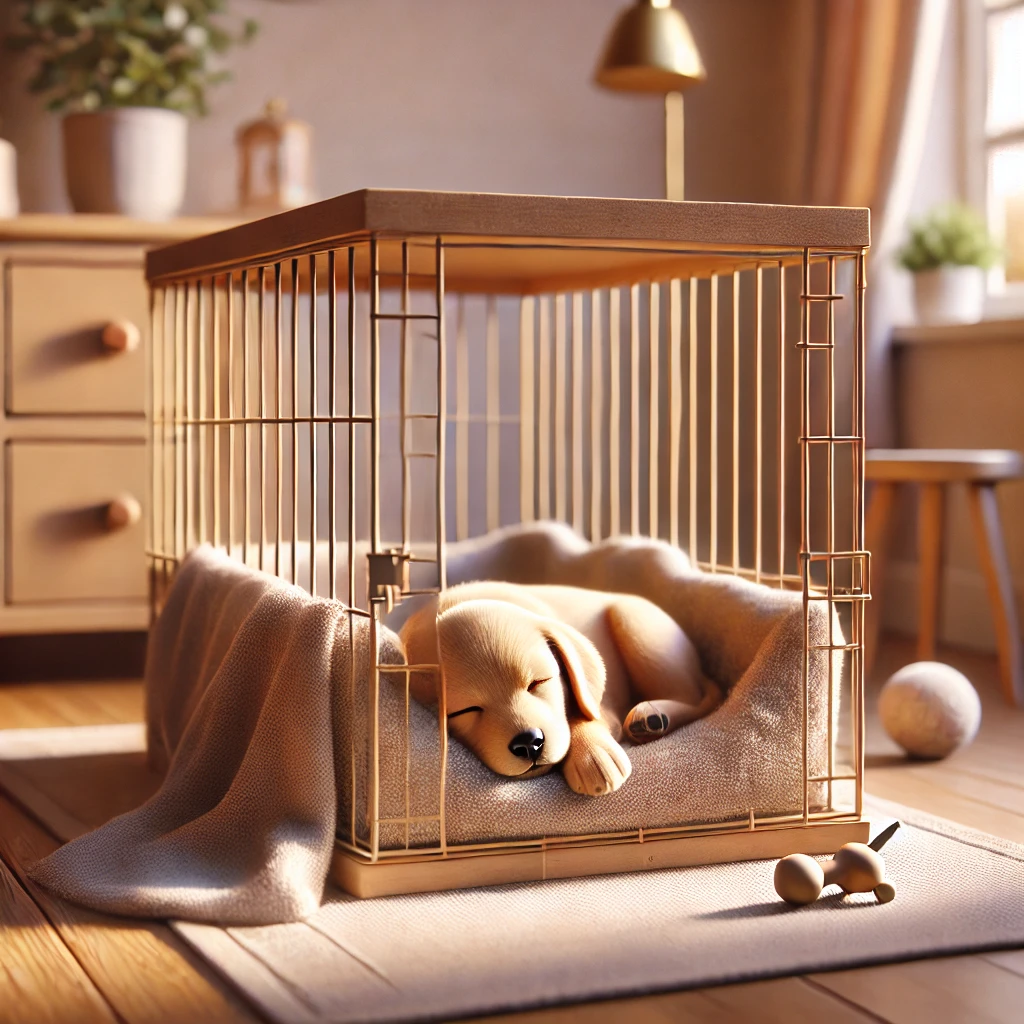
5. Nap Time
Puppies need a lot of sleep, between 15 to 20 hours a day — okay, now, don’t be jealous 😜. Puppies are known to fall asleep at the drop of a hat while totally in the middle of something, like playing.
When your pup shows sleepy signs, take him to his sleeping spot and ensure everyone leaves him alone while he naps.

6. Supervision
Your pupper is curious and inquisitive and will explore to his heart’s delight. Because of that, it is important to keep an eye on him.
When he is awake, take him with you while you walk around the house (avoid your off-limit spots!) and let him explore. Is he allowed in the kitchen? Let him join you while you get yourself a cup of coffee.
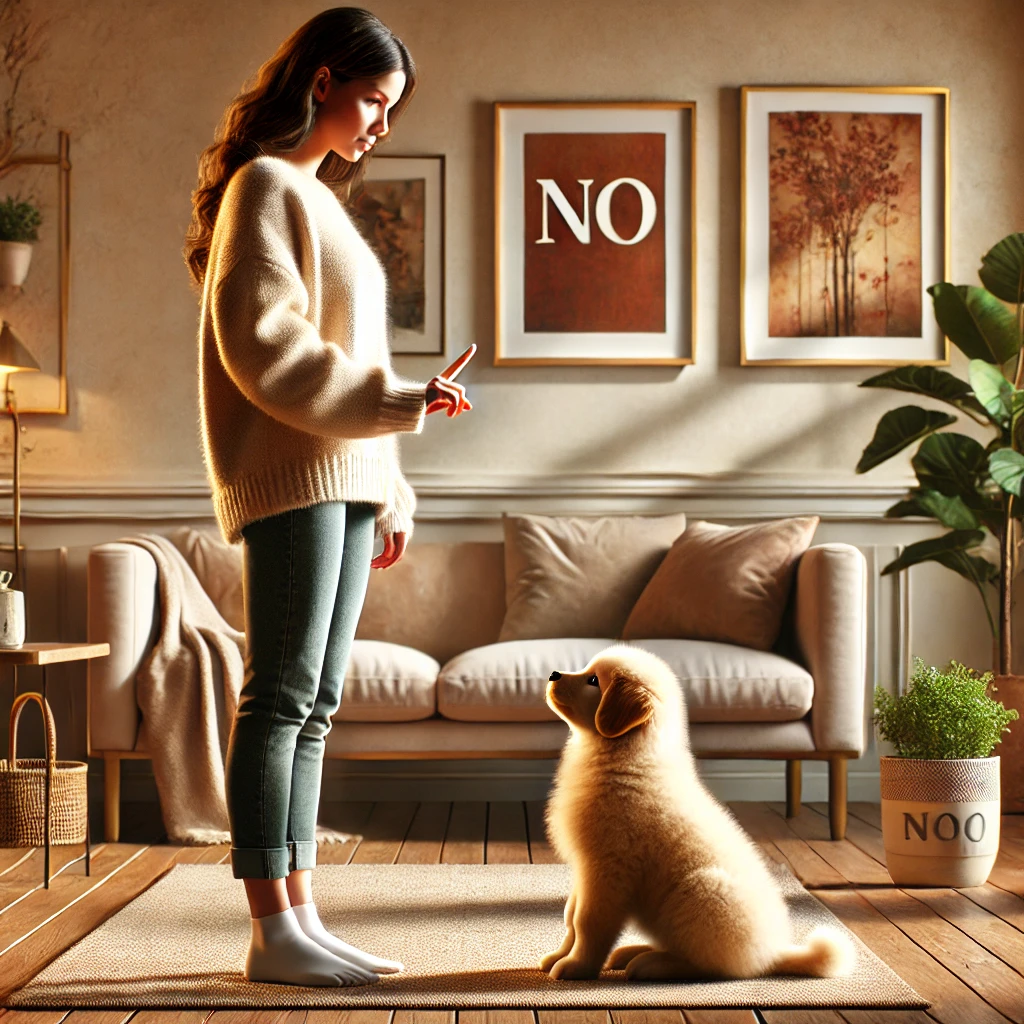
7. Set Rules & Boundaries
You cannot start early enough by setting rules and boundaries. Structure and consistency are key to your pup’s adjustment.
You don’t want your dog on the sofa? Then don’t take him on the sofa with you. It sounds oh-so-simple, but many people give in, and then it will be challenging to unlearn certain behaviours.
Like with toddlers, they will continue to try and push the boundary every time you give in. If your pup does something you don’t want him to do, say chew on your slippers, say ‘no’ (or something similar) and gently redirect him.
NEVER yell or punish your puppy for doing something ‘wrong’ — he does not yet know it is wrong (if it is the first time something happens), and you will only teach him to be afraid or confused.
ALWAYS praise him when he shows good behaviour.
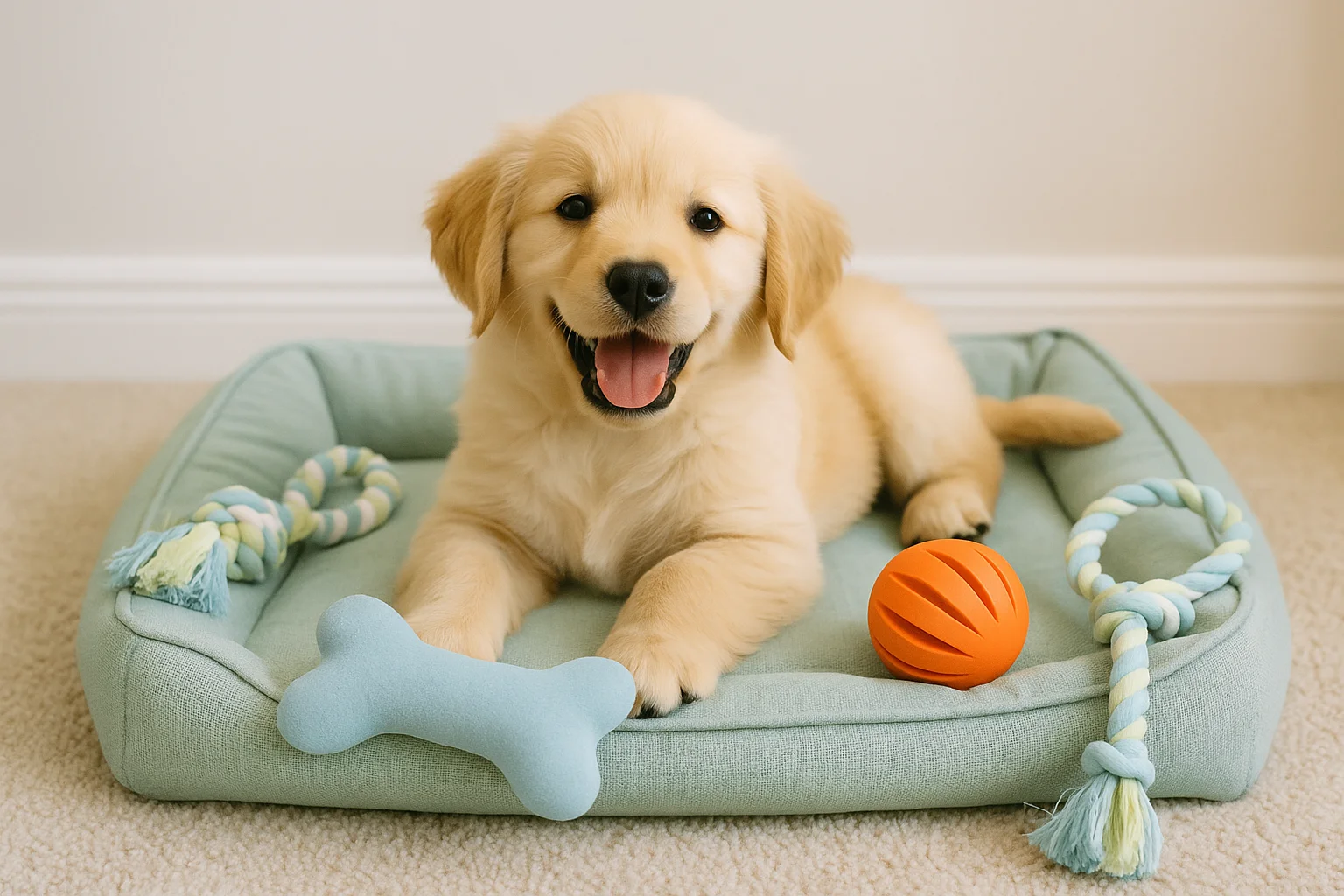
8. Take Your Time
Your puppy is young; he is away from his mom, litter mates, and trusted environment, and is thrown into a world he does not know, with people he does not know. Give him time to adjust and gradually expand his world while you lead him.
Combine this with affection, rules and boundaries, lots of praise for good behaviour, and gentle corrections where needed, and he will trust you. This trust is what creates an unbreakable bond between you 2.
There you go, 8 quick tips to help your puppy adjust to his new and loving home. Were these the tips you expected to read? Drop your thoughts in the comments below!
Remember to pin an image to your favourite pet board!
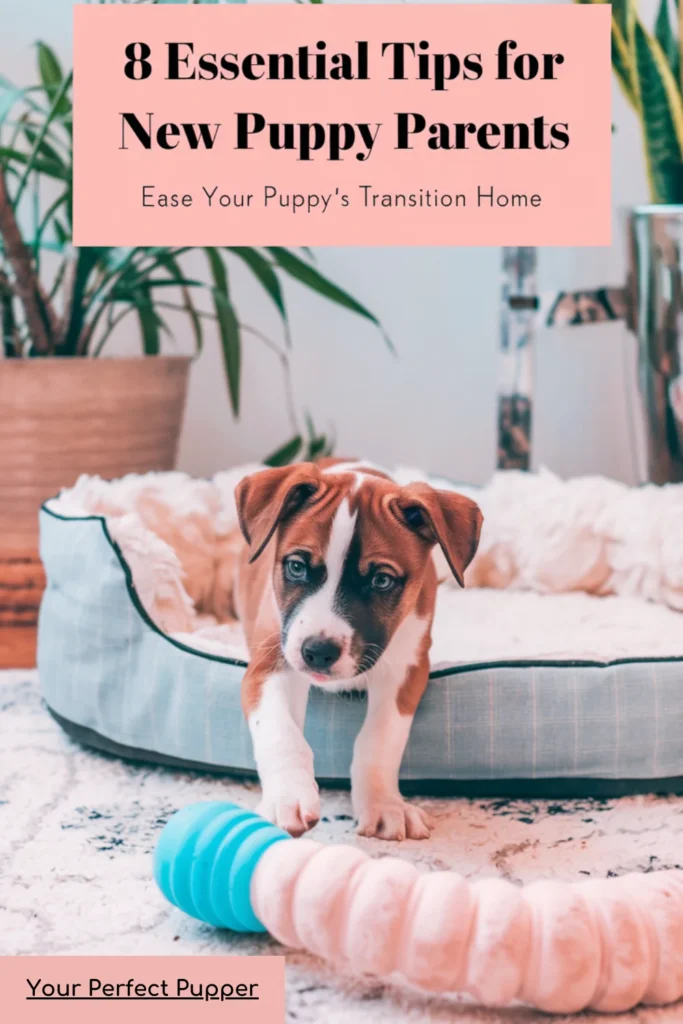
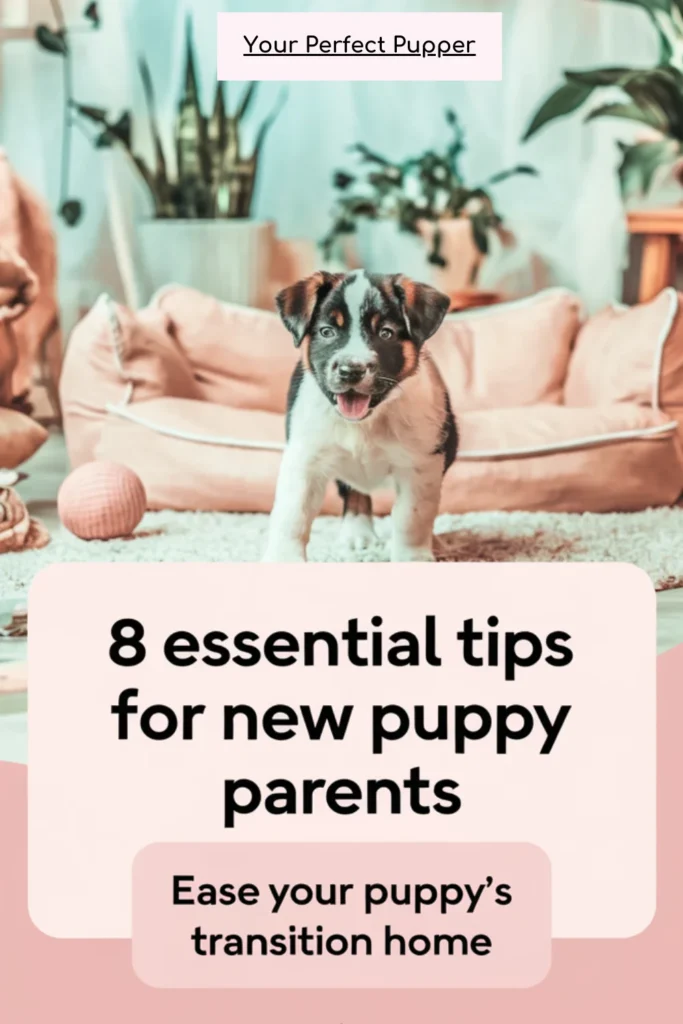



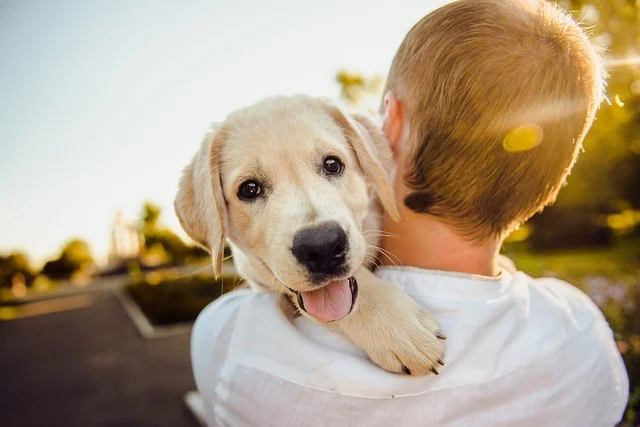
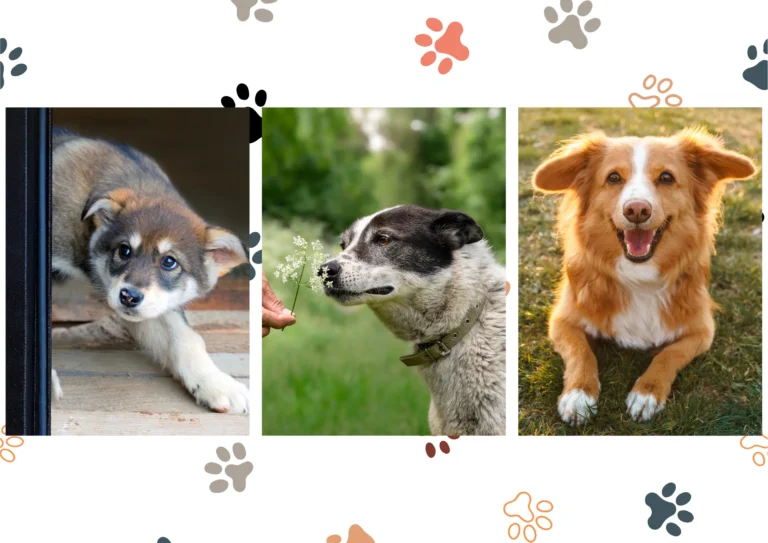
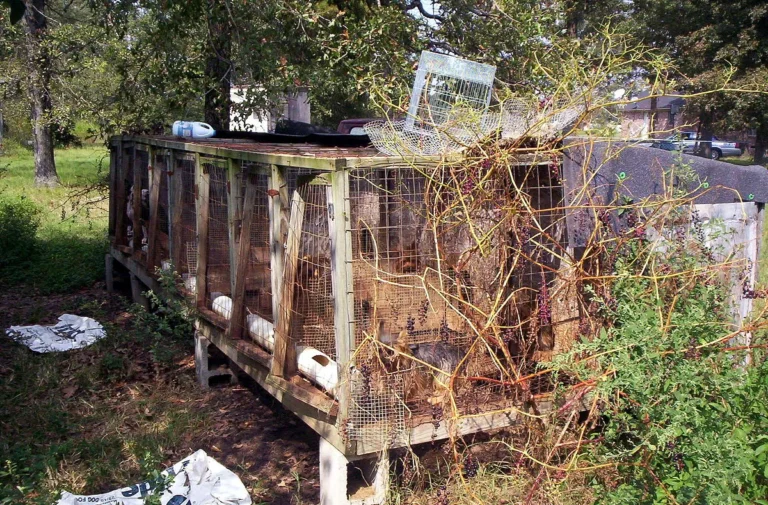


Great advice, especially for 1st. time puppy owners! Thanx for sharing!